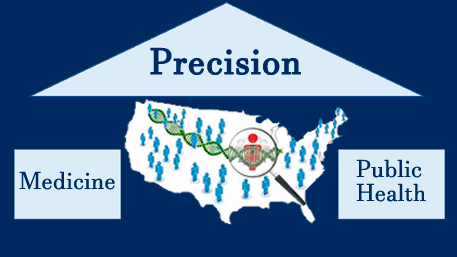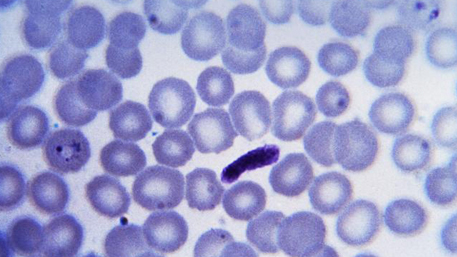Search Results
10 results for public health genomics
Precision Public Health in Action: Enhancing models to predict risk of adverse treatment outcomes in people with hemophilia

In collaboration with the CDC Office of Advanced Molecular Detection, the Office of Genomics and Precision Public Health recently funded the National Center on Birth Defects and Developmental Disabilities (NCBDDD) to strengthen public health capacity by introducing elements of human genomics into applied research on predicting inhibitor risk in people with hemophilia. Hemophilia refers to a group
Posted on byAssessing Pharmacogenetic Variation in the United States to Enhance Health Equity of Pharmacogenetic Testing

CDC’s Genetic Testing Reference Material program (GeT-RM), in the Division of Laboratory Systems will conduct a 2-year project to test 5000 DNA samples from the population-based National Health and Nutrition Examination Survey (NHANES) to determine the allele frequencies of 970 unique haplotypes in 150 pharmacogenes selected because they have high clinical annotation levels of evidence
Posted on byEpigenetics: An Emerging Tool for Health Equity Science

A recent review provides recommendations to improve the scientific investigation of the associations between epigenetic markers, socioeconomic status, and adverse health outcomes. Health equity means that everyone has the opportunity to be as healthy as possible. Health equity science studies the association between social determinants of health (SDOH) and adverse health outcomes. SDOH refer to
Posted on byArtificial Intelligence in Medicine and Public Health: Prospects and Challenges Beyond the Pandemic

Though still in its infancy as a field, artificial intelligence (AI) is poised to transform the practice of medicine and the delivery of healthcare. Powered by breakthroughs in machine learning (ML) algorithms, enhanced computing power, and increasing data volume and storage capacity, AI has made noteworthy advances over the past decade across many medical subspecialties.
Posted on byRare Disease Day 2022: The Evolving Impact of Genomics and Precision Health

In celebration of Rare Disease Day 2022, we reprint excerpts of four previous blogs. Rare Diseases, Genomics and Public Health: An Expanding Intersection (February 17, 2016) Rare Disease Day is celebrated on the last day of February each year. On that day, millions of patients and their families around the world share their stories in order
Posted on byFrom Precision Medicine to Precision Public Health: The Dialogue Continues

A recent Nature article discusses the concept of precision public health (PPH) and raises concerns that too much emphasis on data and technology is “diverting attention away from regular public health.” In this post, we advance this important dialogue by focusing on two distinct components of PPH: its role in reaping the population health benefits
Posted on byContributions of Genomics to the Fight Against Malaria

Malaria was endemic in the United States (US) when the Communicable Disease Center was purposefully opened in Atlanta, GA, rather than Washington DC, in 1946. The Communicable Disease Center, now the US Centers for Disease Control and Prevention (CDC), was started closest to where malaria elimination efforts were needed: the Southern US, including Georgia, suffered
Posted on byNew CDC Partnerships to Advance the Development and Validation of Next Generation Sequencing Tests: A Publicly Available List of Expert Curated Variants

Over the last decade, genetic testing has evolved from examining a few well-defined variants in one or a few genes to the capability to examine much of the human genome using next generation sequencing (NGS). These analyses are particularly useful for disorders with locus and allelic heterogeneity, and are now the norm in several clinical
Posted on byHappy Thanksgiving 2021: Family Health History in the COVID-19 Era

For a second year in a row, this Thanksgiving might not look the same as the ones before it, but some things haven’t changed. Even if you can’t see your loved ones in person, Thanksgiving is still a great time to talk to your family members about your family health history. Having one or more family members
Posted on byAn Expanding List of Tier 1 Genomic Applications: Evidence-based Guidelines for Hypertrophic Cardiomyopathy and Public Health

The CDC Tier-Classified Guideline Database includes three Tier 1 guidelines on hypertrophic cardiomyopathy (HCM). A 2014 guideline from the European Society of Cardiology, a 2017 guideline from the American Heart Association, American College of Cardiology, and Heart Rhythm Society, and a 2020 guideline from the American Heart Association and American College of Cardiology all recommend
Posted on by 2 Comments